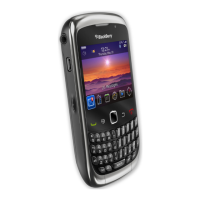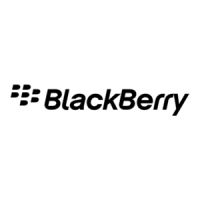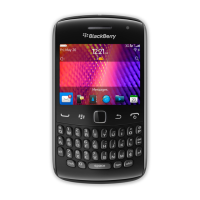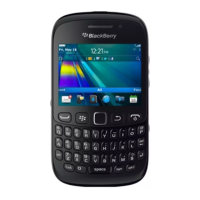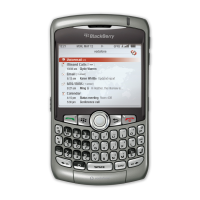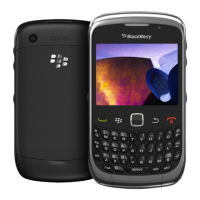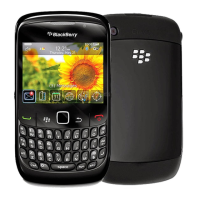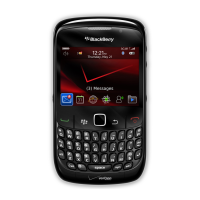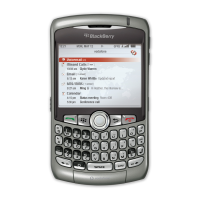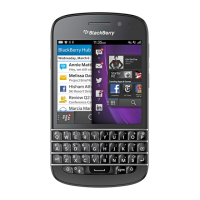• notification (for example, using sound to notify users when new messages arrive)
• feedback (for example, as users adjust the volume of a ring tone, the BlackBerry device plays the ring tone at the
selected volume to demonstrate the volume level)
• branding (for example, playing a branded sound as your application starts)
• entertainment (for example, using sound in a game to entertain users and enhance their experience)
Best practice: Implementing sound
• Use sound judiciously. Sound demands attention and is hard to ignore. When in doubt, do not use sound.
• Consider your users before adding sound to your application. If you add sound, choose a volume, duration, and
frequency that is appropriate for your users.
• Allow users to control sound using their sound profiles.
• Use sounds that are the same volume as other sounds on the BlackBerry device.
• Create notification tones that are audible from a distance. Notification tones should attract users' attention, even when
they are not using their BlackBerry device.
• Use low frequency sounds and avoid piercing sounds.
• Avoid using distracting sounds such as frequent, loud, or jarring sounds. Distracting sound should only be used to
inform users of useful notifications and feedback.
• Avoid using sound as the only form of communication. Users might not hear a sound because of a hearing impairment,
loss of hearing, or a noisy environment. Use sound with other notification methods such as vibration or a flashing LED
indicator.
• Avoid using sound that requires localization. Sounds can have different meanings in different cultures. If possible, avoid
sounds that are culturally specific.
Localization
Localization is the process of adapting software to meet the requirements of local markets and different languages.
Internationalization is the process of designing an application so that it can be adapted to various languages and regions
without engineering changes. Localized applications should reflect correct cultural and linguistic conventions that the
target market uses. Localization and internationalization make it possible for you to create a localized version of your
software.
BlackBerry devices are sold all over the world and BlackBerry device applications are translated into over 30 languages,
including languages that are not based on a Latin alphabet. Some BlackBerry devices also feature a localized keyboard.
Early in the design process, consider whether your application might require localization. If your application does not
require localization now, consider designing your application so that it would be easy to localize it in the future. Be aware
that even if your application might not be localized, some users might want to type text in other languages in your
application.
UI Guidelines Strategies
48
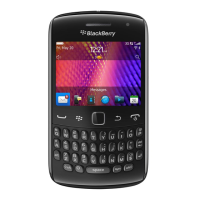
